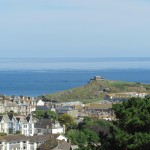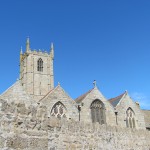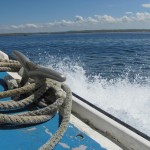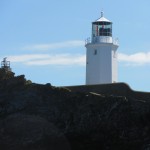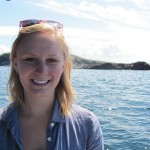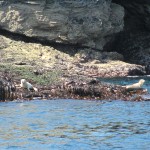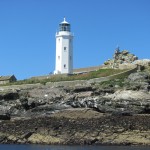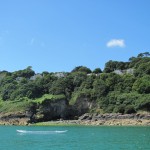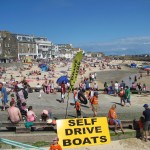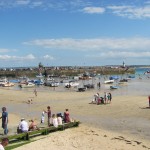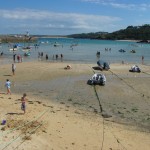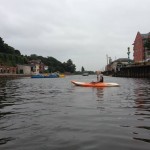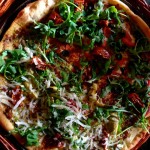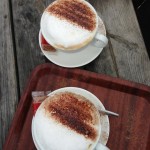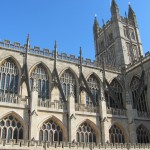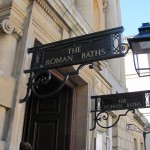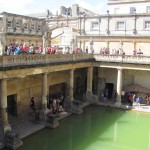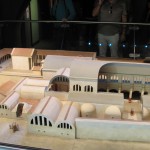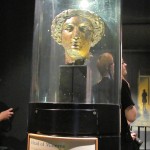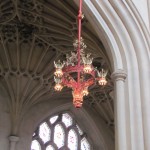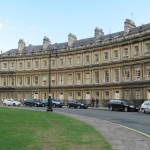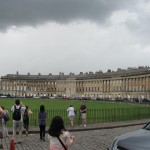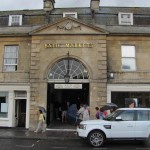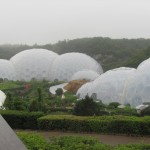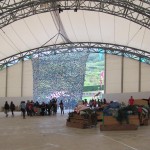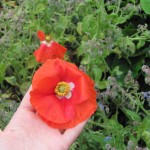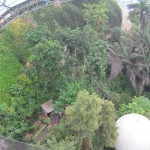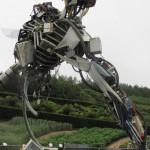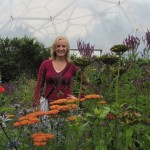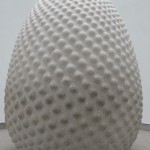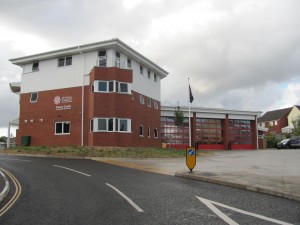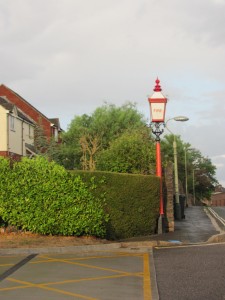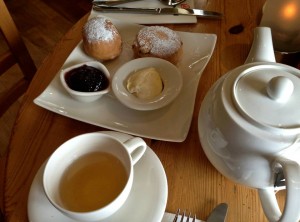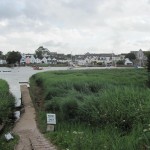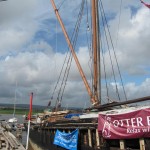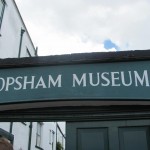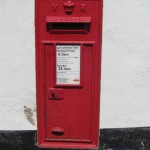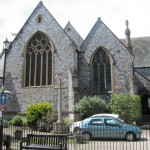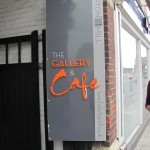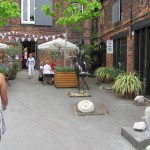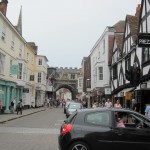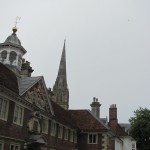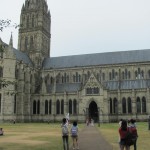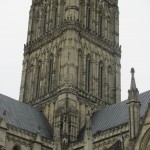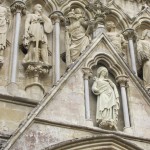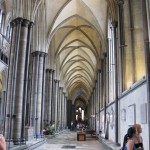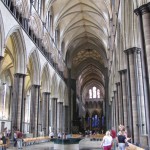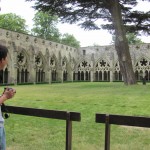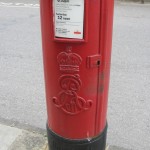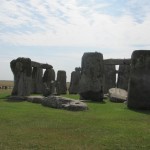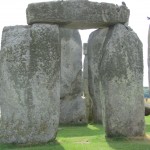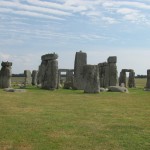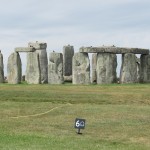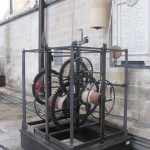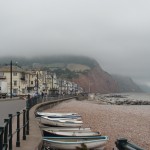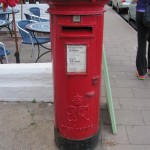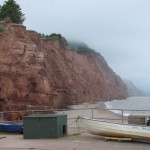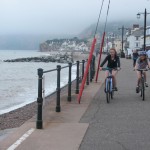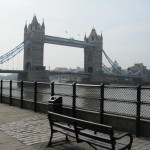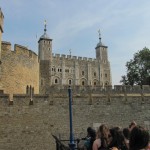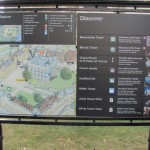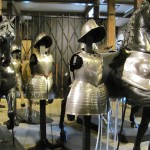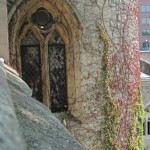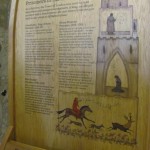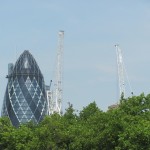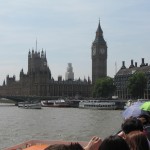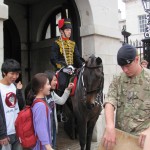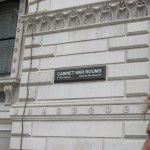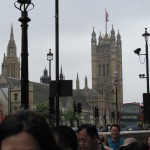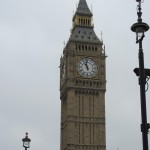St. Ives and Goodbyes
On Wednesday, we traveled on our final daytrip to St. Ives on the southern coast. Once our coaches arrived, they stopped in a coach park atop a hill which overlooked the coast and the city. The view was immediately breathtaking, and all of us headed down the hill towards the harbor side and the bright blue water. After walking past quaint old stone buildings on narrow streets, we reached the life boat station where a group of twelve of us had reserved a short boat cruise for later that afternoon. After checking on our reservation, we decided to check out the shops and restaurants along the harbor street. We were quickly drawn in by the smell of fresh fish and chips and decided to get “take away” and sit along the wall surrounding the beach. That morning was low tide, and the tides at St. Ives are extreme. During low tide, the wall we were sitting on is completely exposed and the beach extends several hundred feet. During high tide, though, the area we were picnicking at is completely submerged and used as a boat ramp. Scattered across the temporary beach were boats anchored to the sand. In just a few hours, these boats would be floating in the harbor during high tide.
After our lunch, we rounded up the twelve boat trip participants and went around the harbor to the wet dock where our boat would pick us up. The stone dock ran from steps leading up to the harbor street down into the water. It was currently exposed because of low tide, but later it would be completely invisible underneath the water. Families and kids fished for crabs and small fish off the side of the dock, and a group of kids showed off their day’s catch to us as we waited for our boat. A small motorboat came to take six of us at a time out to the Dolly P, our tour boat. Once we were all boarded, we began our trip out to the lighthouse island. The water was crystal clear and the weather was perfect for our trip. Once we reached the lighthouse island, the same lighthouse from the 1800s that Virginia Woolf used as an inspiration for one of her stories, we spotted several seals sun bathing on the rocks. Leaving the lighthouse, we sailed along the coasts and were able to take in all the beautiful beaches and cliffs.
Once we disembarked from our boat tour, we changed and went down to the quickly disappearing beach for some sun and sand. The water was too beautiful to leave without testing it out, and even though it proved to be FREEZING cold, we braved it for a swim to and from some of the rocks. On our way back, we were joined by one of the seals and got a close-up view before he swam away. We made it back to the beach just before it had completely been submerged and used the rest of the afternoon to walk along the harbor and watch the tide come in. Our last daytrip to St. Ives was more beautiful than any of us could have imagined and was a wonderful conclusion to all our travels across the southwest of England.
- St. Ives, hilltop view
- Cathedral at St. Ives
- Boat trip
- Lighthouse
- Seals!
- Lighthouse Island
- Coastal Cliffs
- Harbor and Boat Ramp at Low Tide
- Tide Rising
- Tide Rising 2
Thursday was our last day of lectures in the Summer School, and my pathway would be spending the day at the nearby St. Luke’s Campus. St. Luke’s is a small, historic satellite campus close to Exeter’s town center and is used for sports sciences. For our morning lecture, we had Dr. Garcia-Marco again and discussed the HELENA project he worked on. This study profiled physical activity levels and health effects on youth across Europe. The huge study has provided many insights into the effects increased activity levels have on youth and many more reports from segments of the study have yet to be published. Before our lecture came to a close, we had the opportunity to test out some of the objective measurement techniques used in the study like the bioelectrical impedance method for estimating BMI and the hand grip technique which has proven correlations to bone health and cardiovascular fitness. After running to a nearby Waitrose for lunch and eating in the St. Luke’s courtyard, we started our afternoon session in the exercise lab with Dr. Alan Barker where we conducted fitness tests to objectively compare accelerometer readings with energy expenditure. Two girls in our group volunteered to have their resting metabolic rates recorded and participate in a graded treadmill test to have their increased rates recorded. It was interesting to see how accelerometer data is matched with energy data to give a reading of physical activity. We were able to recognize the limits of accelerometers when an increased gradient on the treadmill resulted in higher energy expenditure, but the same accelerometer reading because speed was held constant. A hands-on exercise like this was a great experience for us to see how research data is collected, processed, and objectively analyzed to provide the best possible results.
Friday was our final full day in England, and to end our pathways, we spent our morning delivering oral presentations. Cindy and I had worked wonderfully together throughout our project and had really enjoyed being able to collaborate on our topic. Overall, all the groups in our pathway presented their projects well and each of us had a unique topic and perspective which related back to the pathway focus of physical activity and the environment. After presentations, I went into town for one last time. I took the time to walk along High Street, buy tea at Whittard’s, and eat a flapjack (the English granola bar) at the Cathedral Green before saying my final goodbyes to the city.
That night the entire summer school got ready for the Gala and took a group photo out on the Holland Hall Terrace. After plenty of photos, a lovely dinner, and student speeches that brought tears to our eyes, we danced the night away together. Sitting out on the terrace spending our last moments together as a group before people started heading back home was a bittersweet moment I will never forget.
The next morning at 7:00am, we got onto the coaches one last time to head back to Heathrow Airport and head home. I had nearly 24 hours of traveling ahead of me, but the hardest part by far was saying goodbye to everyone outside of Heathrow.
The Fulbright and International Summer School at Exeter was a once in a lifetime experience for which I will be forever grateful. I had the opportunity to travel to places I have only dreamed of visiting and meet people from across the world I would have never known otherwise. I am so sad that this whirlwind trip has come to a close, but between all the pictures and the friendships I have gained along the way, I know the memories really will “last a lifetime.”
Permalink Comments off
